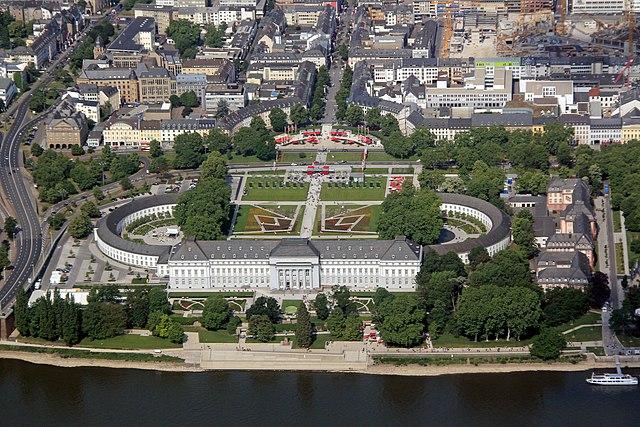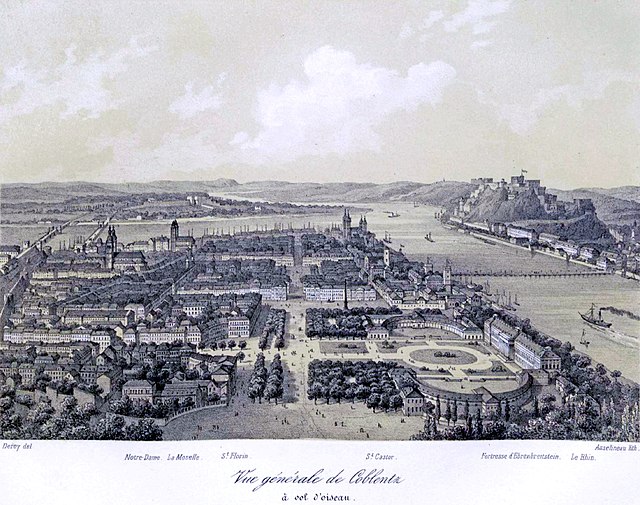Electoral Palace, Koblenz
The Electoral Palace in Koblenz, was the residence of the last Archbishop and Elector of Trier, Clemens Wenceslaus of Saxony, who commissioned the building in the late 18th century. In the mid-19th century, the Prussian Crown Prince had his official residence there during his years as military governor of the Rhine Province and the Province of Westphalia. It now houses various offices of the federal government.
Aerial view of the Electoral Palace in 2011 during the German Federal Horticultural Show
Main (west) façade of the palace
Sculpture Father Rhine and Mother Mosel.
Aerial view of the palace, Koblenz and the Rhine, second half of the 19th century
William I, German Emperor
William I, or Wilhelm I, was King of Prussia from 1861 and German Emperor from 1871 until his death in 1888. A member of the House of Hohenzollern, he was the first head of state of a united Germany. He was de facto head of state of Prussia from 1858, when he became regent for his brother Frederick William IV. During the reign of his grandson Wilhelm II, he was known as Wilhelm the Great.
William I in 1884
Queen Louise of Prussia with her two eldest sons (later King Frederick William IV of Prussia and the first German Emperor William I), circa 1808
Prince Wilhelm at age 13, c. 1810
Portrait of Prince Wilhelm, by Frederick Richard Say, c. 1848








